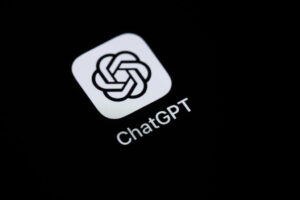OpenAI Empowers Its Agents with a Voice

Expanding AI with Agentic Voices
OpenAI is making significant strides in the world of artificial intelligence (AI) by introducing advanced agentic models. These new AI voices enhance user experience by allowing users to perform more complex tasks with simple voice commands, such as booking flights or modifying orders. The recent release focuses on two main models:
New Models Introduced
- Gpt-4o-Transcribe and Gpt-4o-Mini-Transcribe: These are designed for converting speech into text.
- Gpt-4o-Mini-TTS: This model converts text into spoken words.
Developers can easily access these models through the OpenAI API, which can be integrated with the Agents SDK. By incorporating both text-to-speech and speech-to-text capabilities into its offering, OpenAI is paving the way for a variety of applications, including agentic tools that enhance user interaction with AI.
The Risks of Advanced Synthetic Voices
As OpenAI aims for “more intuitive and deeper interactions” beyond just text, the rise of such sophisticated voice models comes with potential risks. With heightened realism and flexibility, these synthetic voices could lead to more convincing scam bots, increasing the likelihood of deception.
OpenAI is aware of these challenges and is actively engaging with policymakers, developers, and researchers to explore both the opportunities and risks that arise from the use of synthetic voices. This dialogue is critical in shaping how these technologies should be implemented safely and ethically.
Enhanced Accuracy and Realism
On March 21, OpenAI introduced its updated speech-to-text and text-to-speech tools. These models have been finely tuned for enhanced accuracy and reliability, which is particularly beneficial in diverse conversational settings. The models aim to perform well in environments with various accents, background noise, and differing speech rates.
Some key uses include:
- Customer Service Calls: Improving communication in call centers.
- Meeting Transcriptions: Providing accurate records of discussions.
OpenAI’s new models can also adapt their speech styles based on specific tones or character personas. For example, they can sound dramatic or cheerful, which could open new avenues for creative storytelling. Imagine how these voices might enhance experiences at theme parks or theatrical performances, although such advancements could raise concerns about the potential replacement of human creative roles.
Practical Applications of Gpt Models
The Gpt-4o-Transcribe and Gpt-4o-Mini-Transcribe models aim for high accuracy, particularly in conversations with various accents and background noise. Meanwhile, the Gpt-4o-Mini-TTS can adapt its speech to match the desired tone or take on specific personas, allowing for dynamic storytelling experiences.
OpenAI emphasizes that all voices generated by the API are “artificial, preset voices”—unlike voices of celebrities, which have raised ethical concerns. For instance, a prominent actress accused OpenAI of imitating her voice without permission, highlighting the importance of consent in AI development.
Future Developments: Agentic Video AI
Looking ahead, OpenAI plans to introduce the option for developers to create “custom voices” that can enhance personalized experiences. This future development aligns with OpenAI’s safety standards, ensuring that as technology advances, user safety remains a priority.
Moreover, OpenAI is exploring the integration of video capabilities in agentic AI experiences, which could further enrich user interaction and engagement.
By continuing to evolve its AI technologies, OpenAI is working to unlock the full potential of generative AI while ensuring that safety and ethics are at the forefront of its innovations.






